How To Boost Your Chatbot Conversion Rate Using A Hook
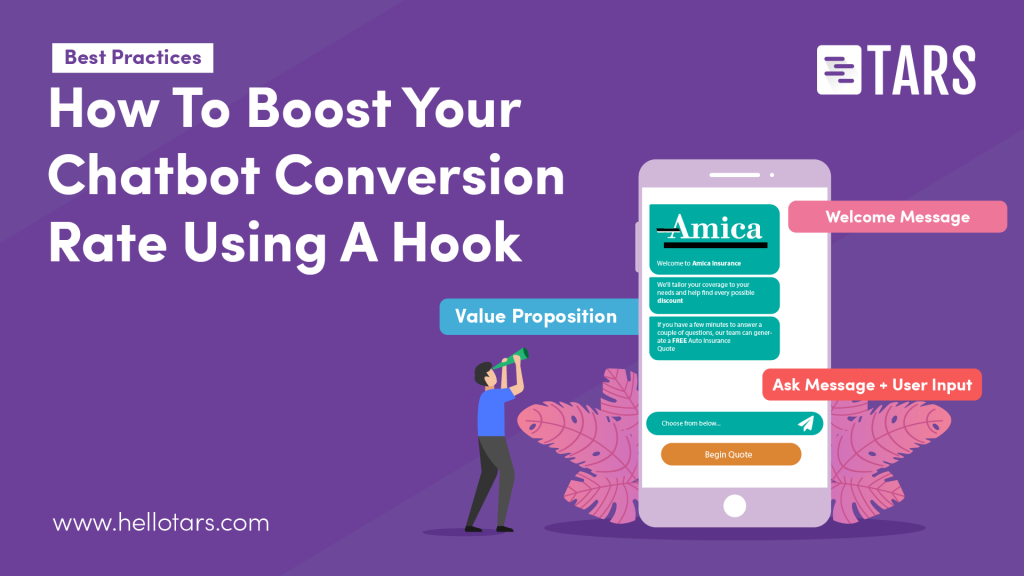
Building a chatbot requires a skill set that is unprecedented in the world of CRO.
Rather than focusing on mobile optimization, form fields, CTAs, and folds, you need to consider hooks, etiquette and message delays.
In this series, we will discuss the chatbot making best practices that you need to build a chatbot that converts.
In this edition, we will explore the anatomy of an optimized chatbot hook.
What is a Hook?
The hook is the first set of messages your user sees when they land on your chatbot.
This is particularly important on a conversational landing page because the hook is the first thing your prospects will see after they click on your ad.
Why is it important?
The vast majority of visitors drop from your page within the first 7 seconds of landing on it. This same principle applies to chatbots and conversational landing pages. Constructing a well-optimized hook is an effective way to reduce the number of people dropping from your page in this period of time and increase conversion rate.
The Anatomy of a Hook
Alright, so you know what a hook is and why it’s important, but how do you actually construct one!
A good framework for doing so is your traditional landing page. Open up any landing page and look at the first fold.
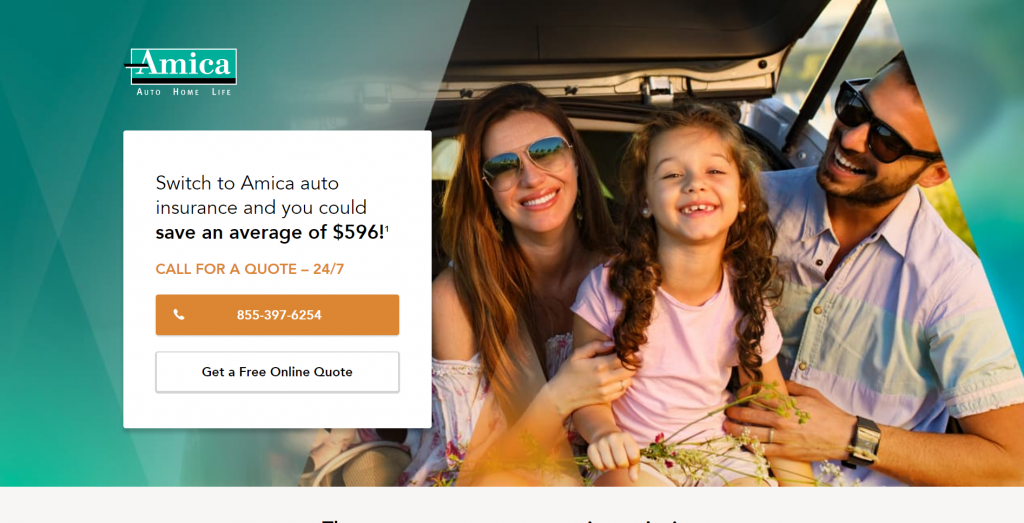
There are always three elements present in this fold that serve an important purpose that will serve as the blueprint for your hook
1- Branding:

Most landing pages have some amount of branding on in their first fold. This branding comes in many forms from brand colors to a uniform brand language (I mean the way the text is phrased on the page), but the most important part of this branding in the context of chatbot development is the logo.
A logo is a single visual representation of a brand that serves as an easily identifiable visual cue which is useful to establish legitimacy and if you are running retargeting campaigns where your prospects need to be able to remember who you are.
2- Value proposition:

In those 7 seconds where a visitor is deciding whether to close form your page or not you need to grab their attention, and we’ve found that a good way of doing that is telling them that you are offering what they are looking for in a concise way (i.e. by presenting your value proposition)
3- CTA

Finally, once the user is convinced that they want to proceed with the buying process you need to give them an opportunity to do so using a call-to-action.
Transferring each of these three characteristics to a chatbot conversation we arrive at a three message sequence that mirrors the first fold of a landing page but in a conversational way:
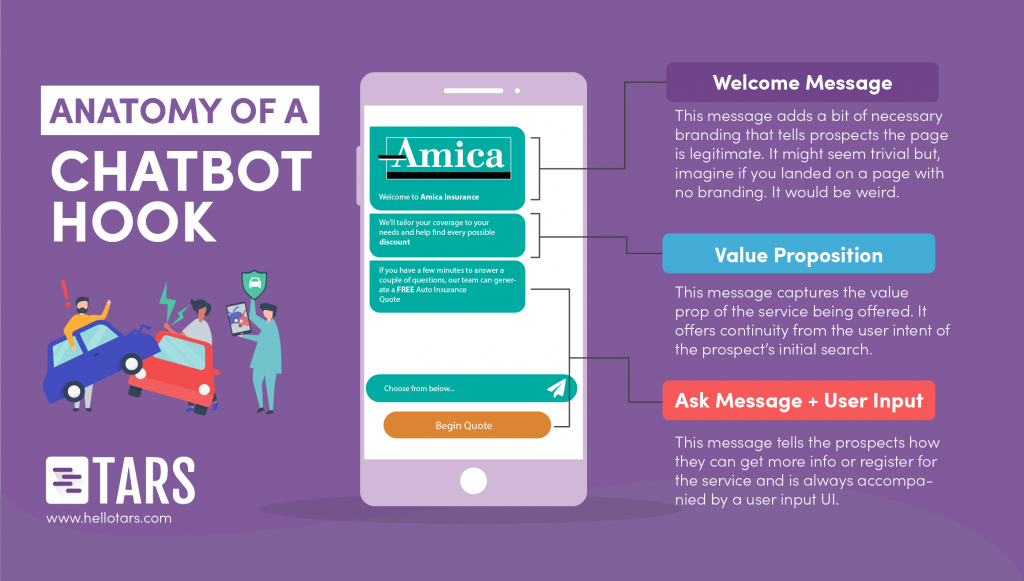
While constructing these three messages, there are a few considerations to keep in mind to ensure maximum engagement:
- Use a logo in your welcome message. People take it for granted that a landing page will have a logo on it, but when it’s missing it is eerily obvious. Landing pages without logos look generic, and generic landing pages run the risk of looking spammy. It should go without saying that spammy landing pages don’t convert, so please add a logo in your welcome message.
- Keep your messages short- Your prospects don’t want to read an essay so don’t cram as much info into a message as possible. We recommend restricting your messages to the length of a short tweet.
- Don’t send more than three messages- Having 15+ short messages is just as bad as having 3 long messages. Use your discretion to figure out what feels most natural but in the hook we recommend 3 at max.
- Make your ask uncontroversial- Make an ask that isn’t too personal and can be responded to without any real repercussions for the prospect. For example, in this conversational landing page I asked if prospects to Get a FREE Quote. Pressing this button doesn’t share any personal info and if prospects don’t like what they see on the other side they can close. But, once they click, they will feel more invested and might actually convert. As an added advantage, uncontroversial asks can be responded to with a button, which is easier than tapping out a whole name or zip code.
Arnav is the Director of Content Marketing at Tars. He spends most days building bots, writing about conversational design and scrolling through Giphy’s trending section looking for the gifs that go into the Tars Newsletter.
Recommended Reading: Check Out Our Favorite Blog Posts!
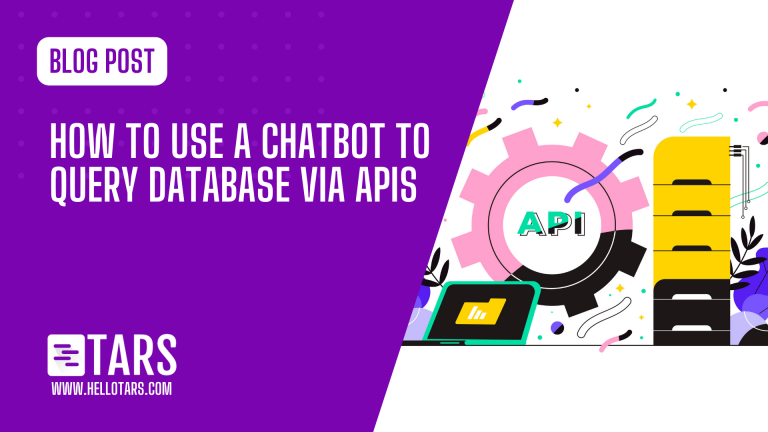
How to Use a Chatbot to Query Database via APIs
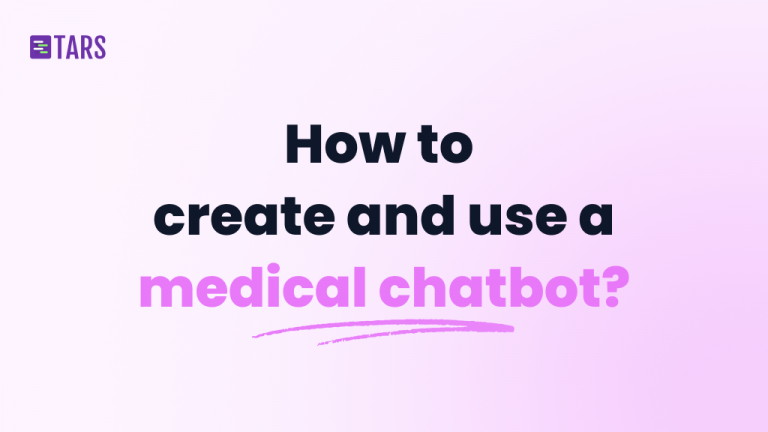
How to create and use a medical chatbot for medical diagnosis, symptom checking and more: detailed guide
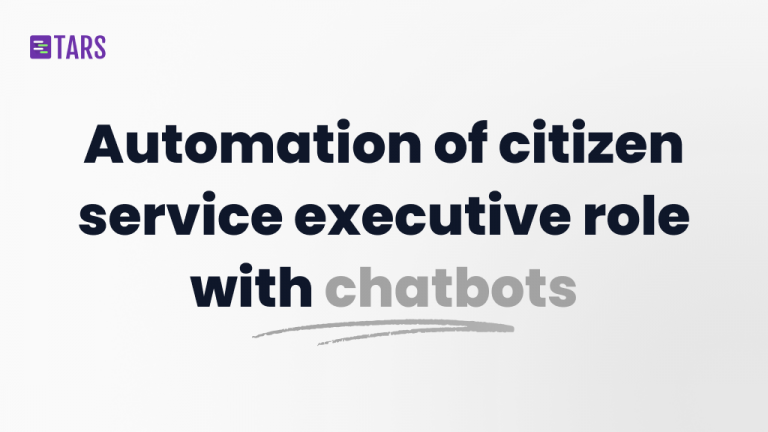
Automation of citizen service executive role and responsibilities with chatbots

Our journey in a few numbers
With Tars you can build Conversational AI Agents that truly understand your needs and create intelligent conversations.
years in the conversational AI space
global brands have worked with us
customer conversations automated
countries with deployed AI Agents
